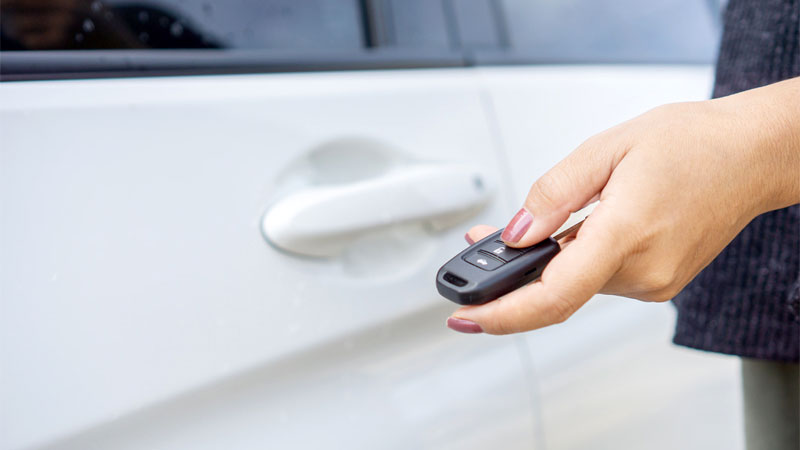Car key fobs have become a ubiquitous accessory for modern car owners. These small, handheld devices allow you to lock and unlock your car doors, activate the alarm system, and even start your car's engine from a distance. But have you ever wondered how a car key fob works? In this article, we'll explore the technology behind these handy little devices.

At their most basic level, car key fobs consist of a small radio transmitter and receiver. The transmitter sends a unique code to the receiver when you press a button on the fob. If the code matches the one programmed into the car's computer, the car performs the desired function, such as unlocking the doors or starting the engine.
The codes used by car key fobs are typically generated by an encryption algorithm. This ensures that each code is unique and cannot be easily copied or intercepted by someone attempting to steal your car. Some car key fobs use rolling codes, which generate a new code each time the button is pressed. This makes it even more difficult for an unauthorized user to gain access to your car.
Car key fobs typically use radio waves to communicate with your car's computer. These waves are sent at a specific frequency and can be blocked by objects like walls or other vehicles. This is why the range of a car key fob can vary depending on your location and the environment around you.
To extend the range of a car key fob, some manufacturers have developed fobs that use Bluetooth or Wi-Fi to communicate with the car's computer. This allows you to control your car from greater distances, and even check on its status remotely using a smartphone app.
In addition to their basic functions, some car key fobs include additional features like a panic button, which can activate your car's alarm system in case of an emergency. Some fobs also include a remote start function, which allows you to start your car's engine from a distance so it can warm up or cool down before you get inside.
Overall, the technology behind car key fobs is quite simple, but the encryption and radio wave communication make them a secure and convenient way to control your car from a distance. With the added features and convenience they provide, it's no wonder they have become an essential accessory for modern car owners.

 Englishen
Englishen











 No.991 Xingxiu Road,Taiwanese Investment Zone, Quanzhou, Fujian Province,P.R.China
No.991 Xingxiu Road,Taiwanese Investment Zone, Quanzhou, Fujian Province,P.R.China +86 13960286508
+86 13960286508
 3D Reality Showroom
3D Reality Showroom
